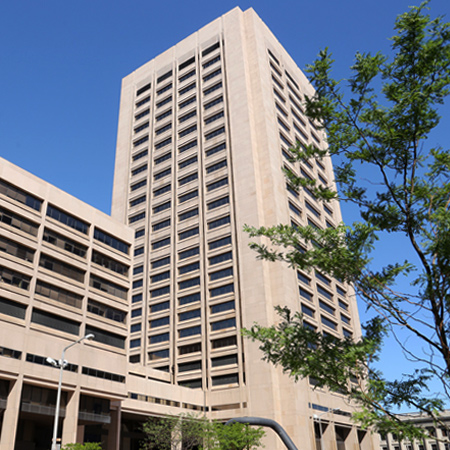History Of The Courthouses

First Courthouse and Jail, 1812
This courthouse was built in 1812 by Levi Johnson on the northwest corner of Pubic Square. The courthouse featured jail cells and living rooms for the sheriff on the first floor, with the courtroom on the second floor. The courtroom was also used for town meetings and social gatherings. It was torn down in 1830.
(Drawing by Wm. Waterman)

Second Courthouse, 1828
This was on the southwest corner of Monumental Park (now Public Square) and it cost $8,000. This second courthouse was a two-story brick building with a wooden dome. By 1832, a stone jail with cells and sheriffs’ quarters was added, fronting on Champlain Street (now Prospect). The building was known as "the Blue Jug.” It was torn down in 1858.


Third Courthouse, 1860
The third Cuyahoga County courthouse opens on the north side of Public Square on Rockwell Avenue at a cost of $152,500. The courthouse was built of dressed stone, was three stories high and 80 feet wide by 152 feet long. In the basement were the offices of the coroner and the surveyor; the ground floor housed the offices of the auditor, probate judge, recorder, and treasurer; the second floor contained two courtrooms and offices of the sheriff and clerk; and on the third were two jury rooms, a room for county school examinations, and the criminal courtrooms. In 1884, two additional stories are added at a cost of $100,000. The county treasurer, auditor, recorder, and coroner retained their offices in this "Old courthouse"; subsequently offices for the board of education, board of health, soldiers' and sailors' relief commission, juvenile court, mothers pension bureau, county farm bureau and the citizens' league were established there also. This third courthouse would be demolished in 1935.


Fourth Courthouse, 1875
Work on the fourth courthouse begins on land facing Seneca Street. It was the most pretentious courthouse yet erected, and cost $250,000. Built in Renaissance style, it was four stories high and faced with cut stone. This building was one of the first in the city to be entirely constructed of fireproof materials. Upon completion, the probate and criminal courts, offices of the prosecutor, county surveyor, sheriff and the jail were located in this building. Later the juvenile and insolvency courts were also housed there. It would be torn down in 1931.
(1901 photo: Cleveland Public Library Photograph Collection)
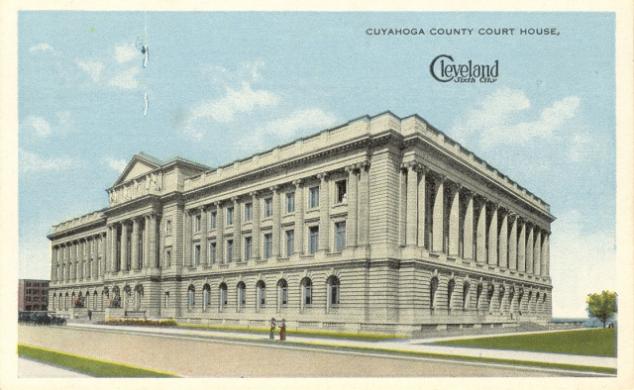
Old Courthouse, 1912
Opened in 1912, the historic old County Courthouse at 1 Lakeside Avenue housed the Common Pleas Court until the Criminal Division moved to the new County Criminal Courthouse in 1931. It remains in use and currently houses the Domestic Relations Court, the Probate Court and the 8th District Court of Appeals.

(Construction in 1908: Cleveland Public Library Photograph Collection)

County Criminal Courthouse and Jail
In 1930, the Common Pleas Court Criminal Division moved into this art deco courthouse and jail on East 21st Street between Superior and Payne Avenues. It was completed by the county at a cost of approximately $1,250,000. The main structure is four stories high and is surmounted by a tower fourteen stories high. This tower constitutes the county jail and is capable of housing 1,426 inmates. The building, covering a ground area of 196 by 176 feet, is constructed of steel and marble and is entirely fireproof. The following offices are located there: the criminal assignment room, the grand jury room, the criminal branch of the clerk of courts, the criminal record division, the criminal branch of the sheriff's office, the county prosecutor's office, the probation division, and the division of parole of the state welfare department.
The Criminal Division remained there until the Justice Center opened in 1976. The building fell into neglect and was torn down in the 1990s.
Source: Ohio History Collection, Ohio Memories, Digital Gallery

Ontario and Lakeside (1926)
The current home of the Justice Center as seen 50 years before its construction. These buildings were razed to build the Justice Center.
Source: Cleveland Public Library, Digital Gallery

July 10, 1973
The foundation of the Justice Center is being prepared. The building in the lower left was torn down in 1994 to build the jail annex.
Source: Cleveland State University, Michael Schwartz Library, Special Collections

February 1975
Architect Dick Bird discusses a point on one of the upper floors with a representative of Turner Construction and an unidentified person.
Source: Cleveland State University, Michael Schwartz Library, Special Collections
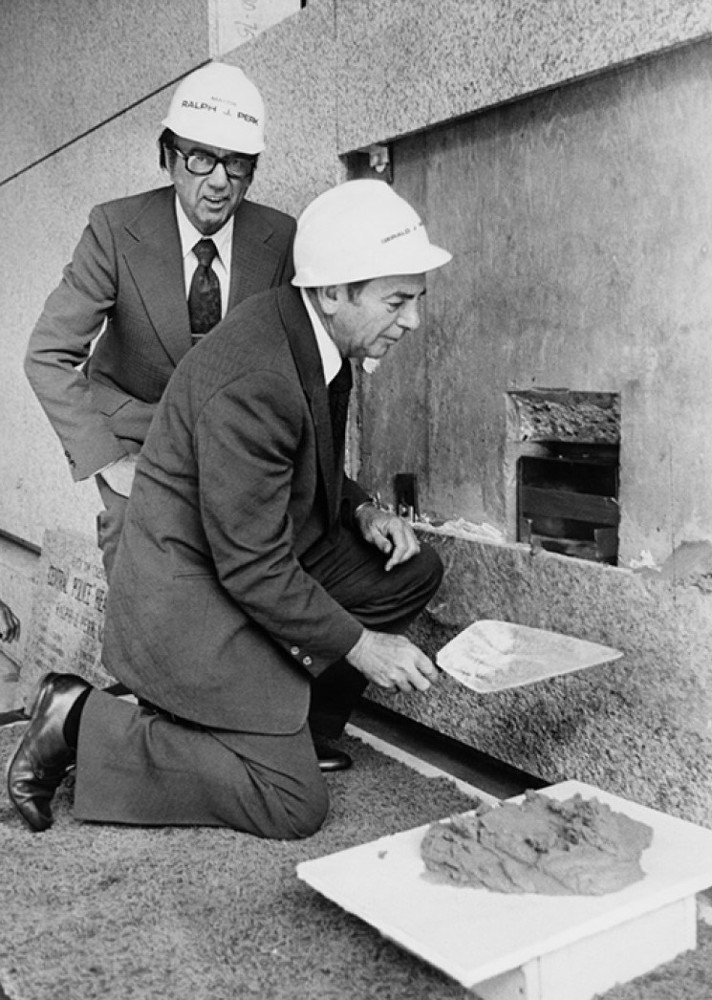
June 18, 1975
Mayor Ralph Perk watches as Cleveland Police Chief Gerald Rademaker seals a time capsule into a Justice Center cornerstone.
Source: Cleveland State University, Michael Schwartz Library, Special Collections
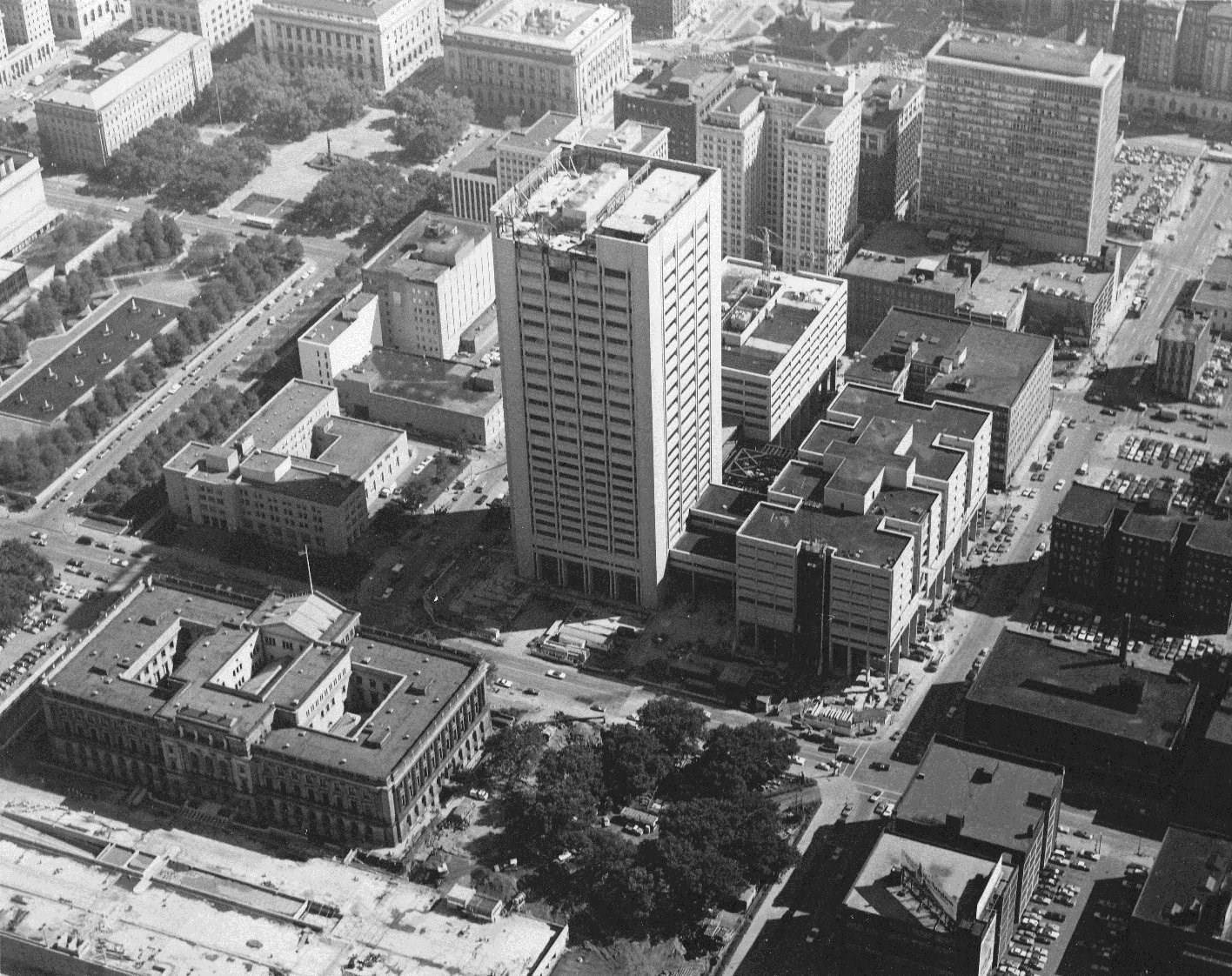
Nearly Completed
Construction on the Justice Center took less than four years. The Courts Tower (seen under construction above) stands on the northern corner of the block, and was designed by Prindle, Patrick and Associates. The 25-story structure is 420 feet (130 m) high and contains 44 courtrooms and nine hearing rooms, which are divided between Cleveland Municipal Court and Cuyahoga County Common Pleas Court.

"Portal" Installation, August 24, 1976
Isamu Noguchi's sculpture "Portal" is installed on the east side of the Justice Center.
Noguchi entitled a number of works "portals" that have a kind of arched shape. This abstract tubular form changes its shape, depending on the viewing angle. But in every direction, it has a kind of monumentality--and it is 36 feet high.
Source: Cleveland State University, Michael Schwartz Library, Special Collections
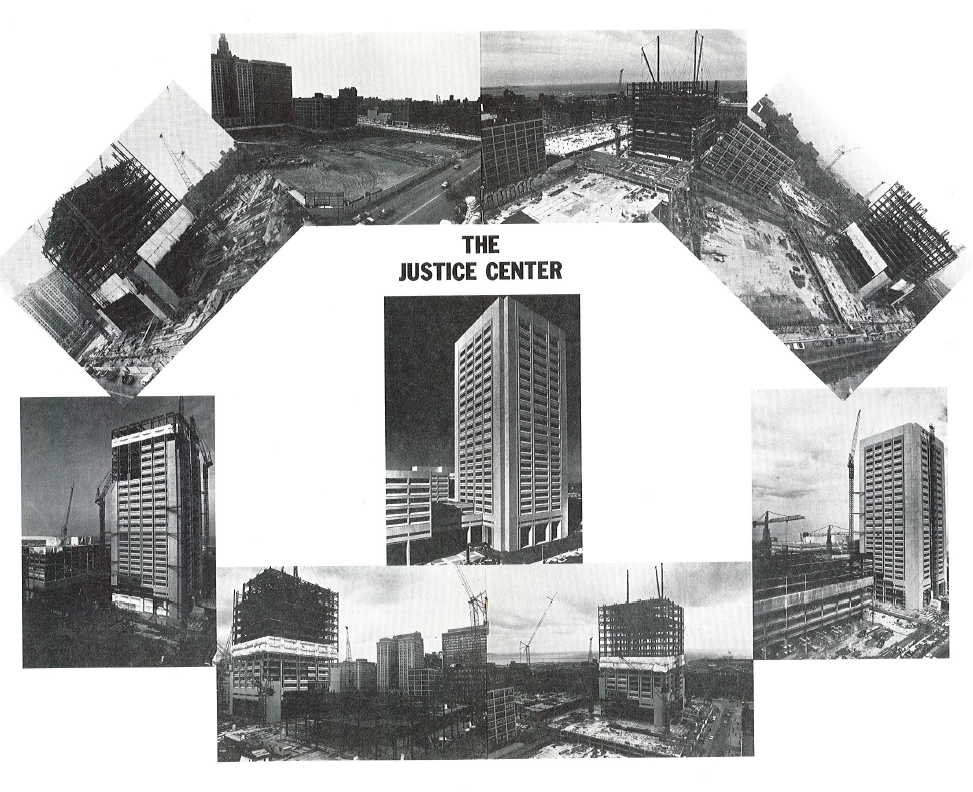
Construction Montage
This montage was part of the commemorative program at the dedication ceremony.

Dedication, September 17, 1976
Source: Cleveland State University, Michael Schwartz Library, Special Collections

Dedication Proclamation, September 17, 1976
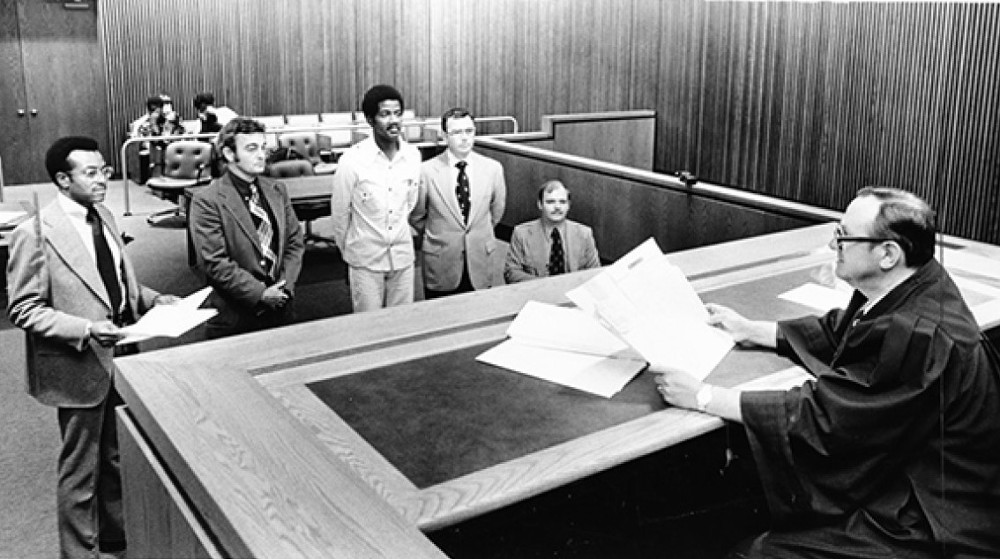
First Hearing, September 17, 1976
Judge David Matia conducts the first hearing in the Justice Center from his 17th floor courtroom. The hearing was held even though the Court Tower did not officially open until November 1, 1976. Note that the jury box seats are not yet installed. The seats in the rear of the courtroom are the ones still in use today.
Source: Cleveland State University, Michael Schwartz Library, Special Collections
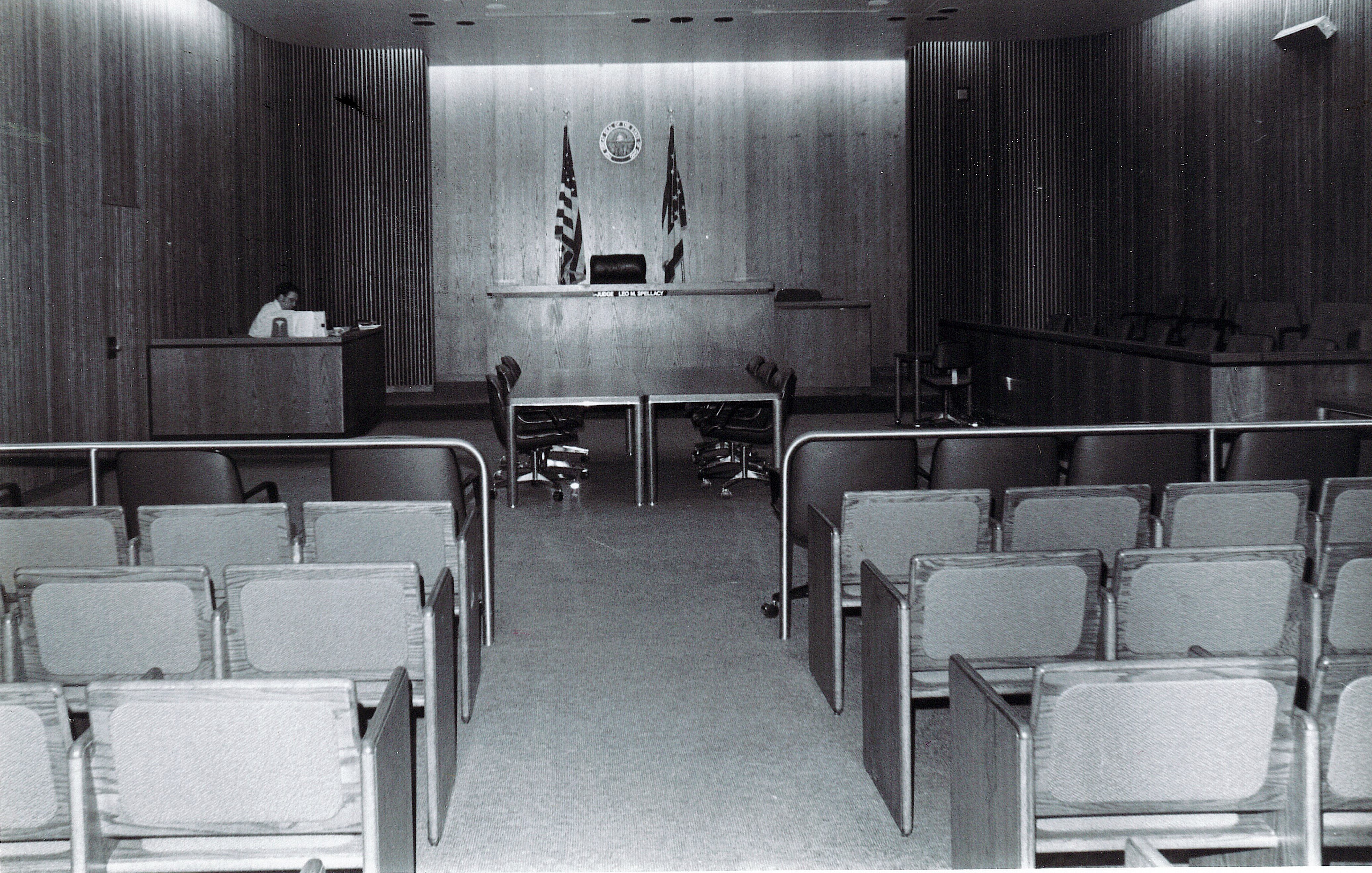
Courtroom of Judge Leo Spellacy
A look at one of the brand new courtrooms.
Photo courtesy Cuyahoga County Court of Common Pleas
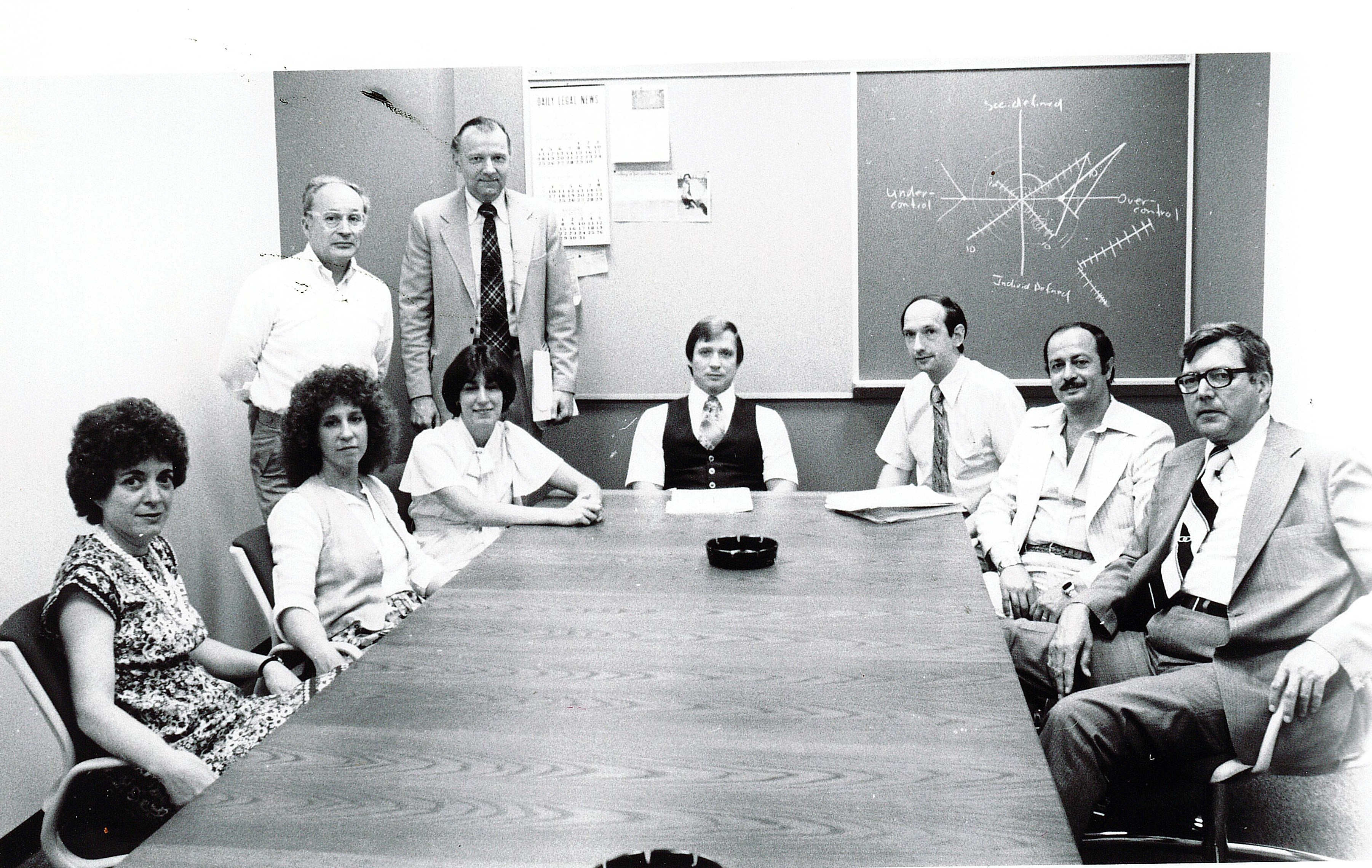
Jury Room
A meeting is held in one of the Justice Center's new jury deliberation room. Some of the jury rooms still contain walls painted with designs from the initial opening in 1976.
Photo courtesy Cuyahoga County Court of Common Pleas

Flooding, January 13, 1982
The Justice Center has been plagued by leaks and water issues since it opened in 1976. In this photo, workers clear water that poured in from a burst sprinkler line. This is to the west of the galleria, at the bottom of the steps leading to the Cuyahoga County Clerk of Courts Office.
Source: Cleveland State University, Michael Schwartz Library, Special Collections
